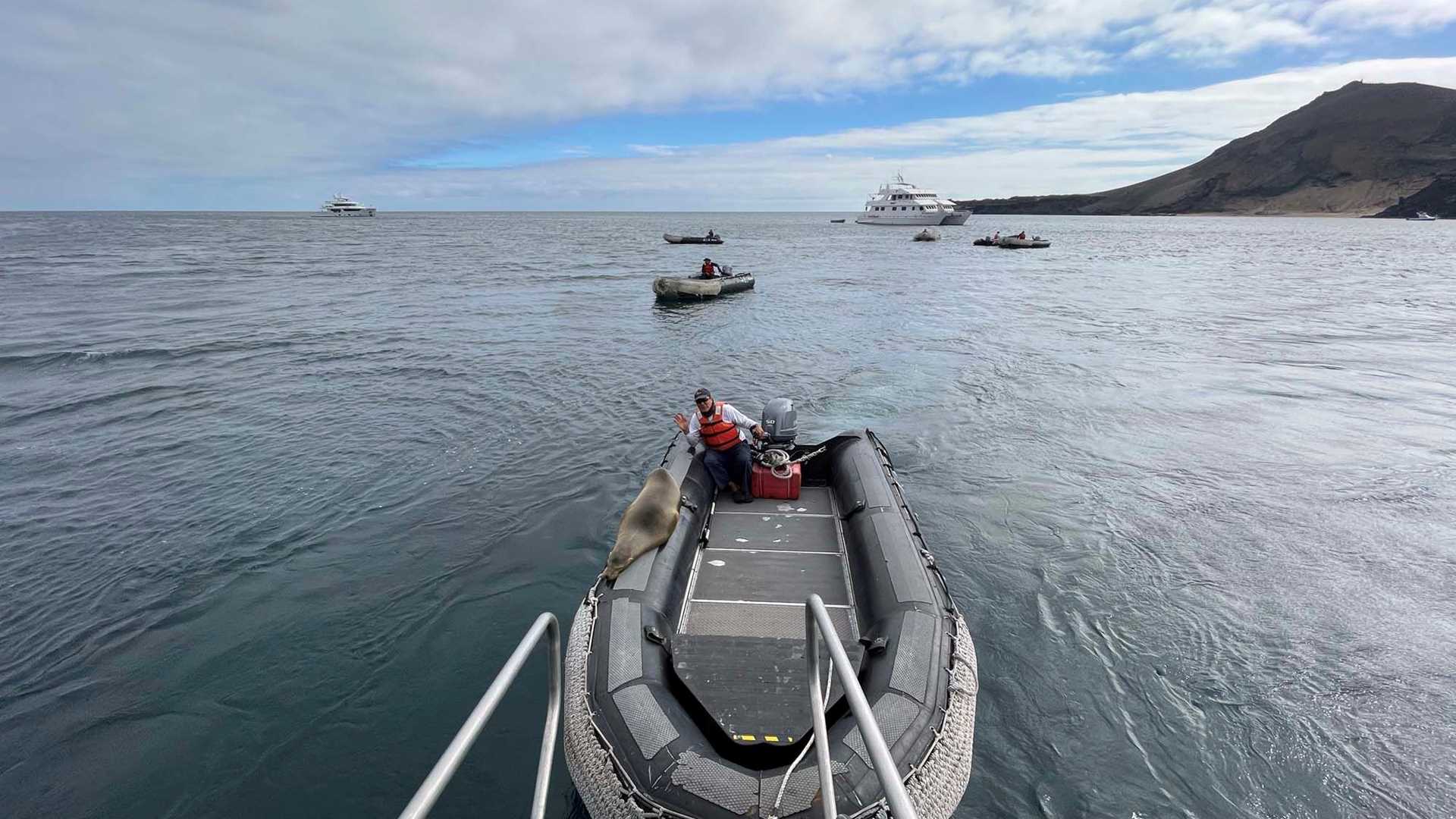Early this morning we hiked to the top of Bartholomew Island for the most famous photographed vista of the Galapagos, which aligns a number of the islands in one shot. The volcanic formations contribute to its beauty as well as the combination of colors between the rusty lava and the blue waters around it.
The morning temperature was very pleasant and towards the end of the hike, we spotted lava lizards sunbathing as well as a lonely finch looking for small seeds. Later, we went ashore to the beach and got a surprise visitor, a curious and tired female sea lion was sleeping comfortably on one of our Zodiacs. She was very relaxed and even slept through the ride to the shore and back. Eventually, she jumped back into the water and swam away.
This afternoon, we arrived at Chinese Hat Islet and after anchoring, we went snorkeling from the Zodiacs. Our guests observed many fish, Galapagos penguins, white-tipped reef sharks, and a large spotted eagle ray. After snorkeling, we returned once more to Chinese Hat Islet for a late afternoon Zodiac exploration of the coast, where we spotted penguins and sea lions, and enjoyed a great sunset.







